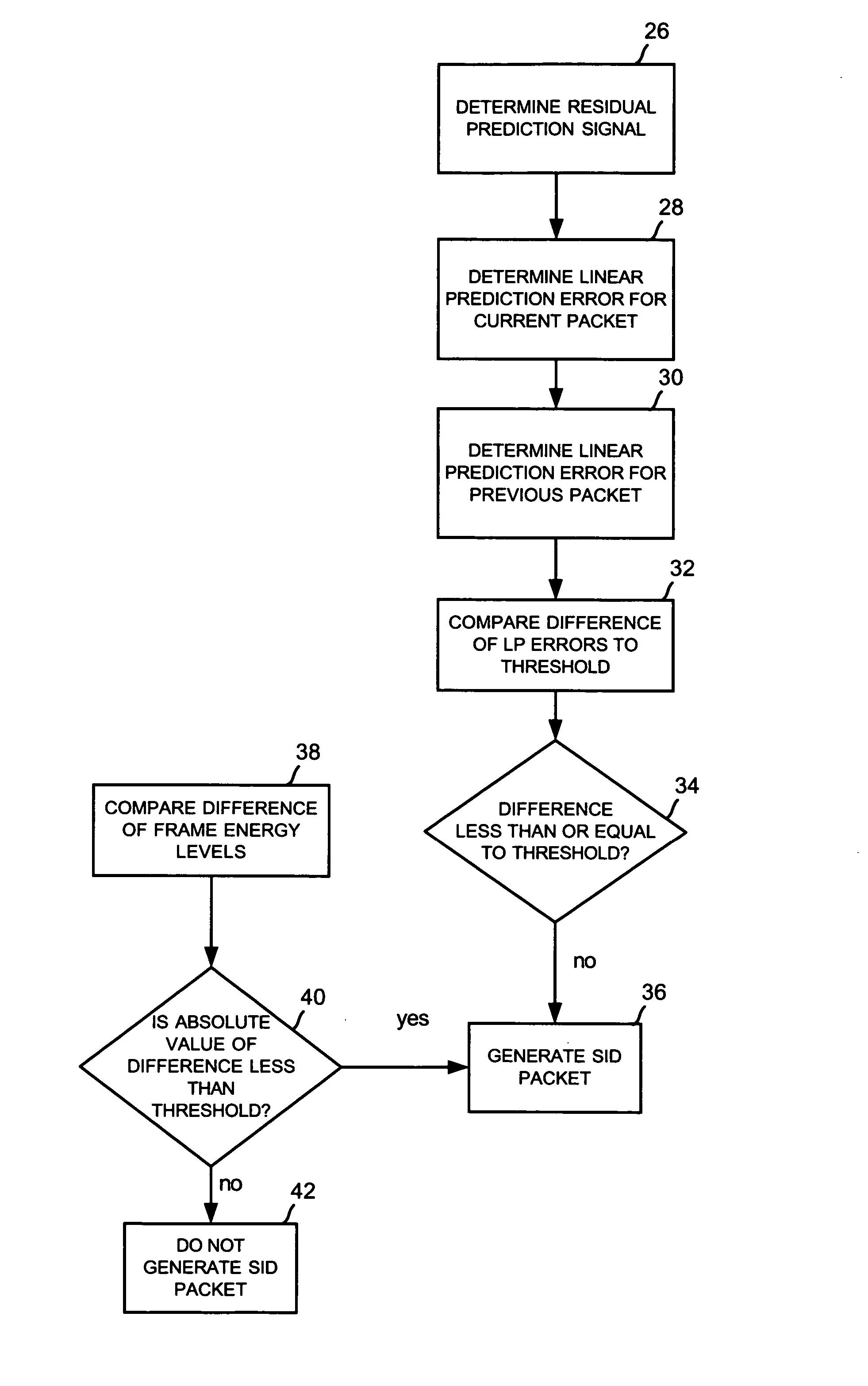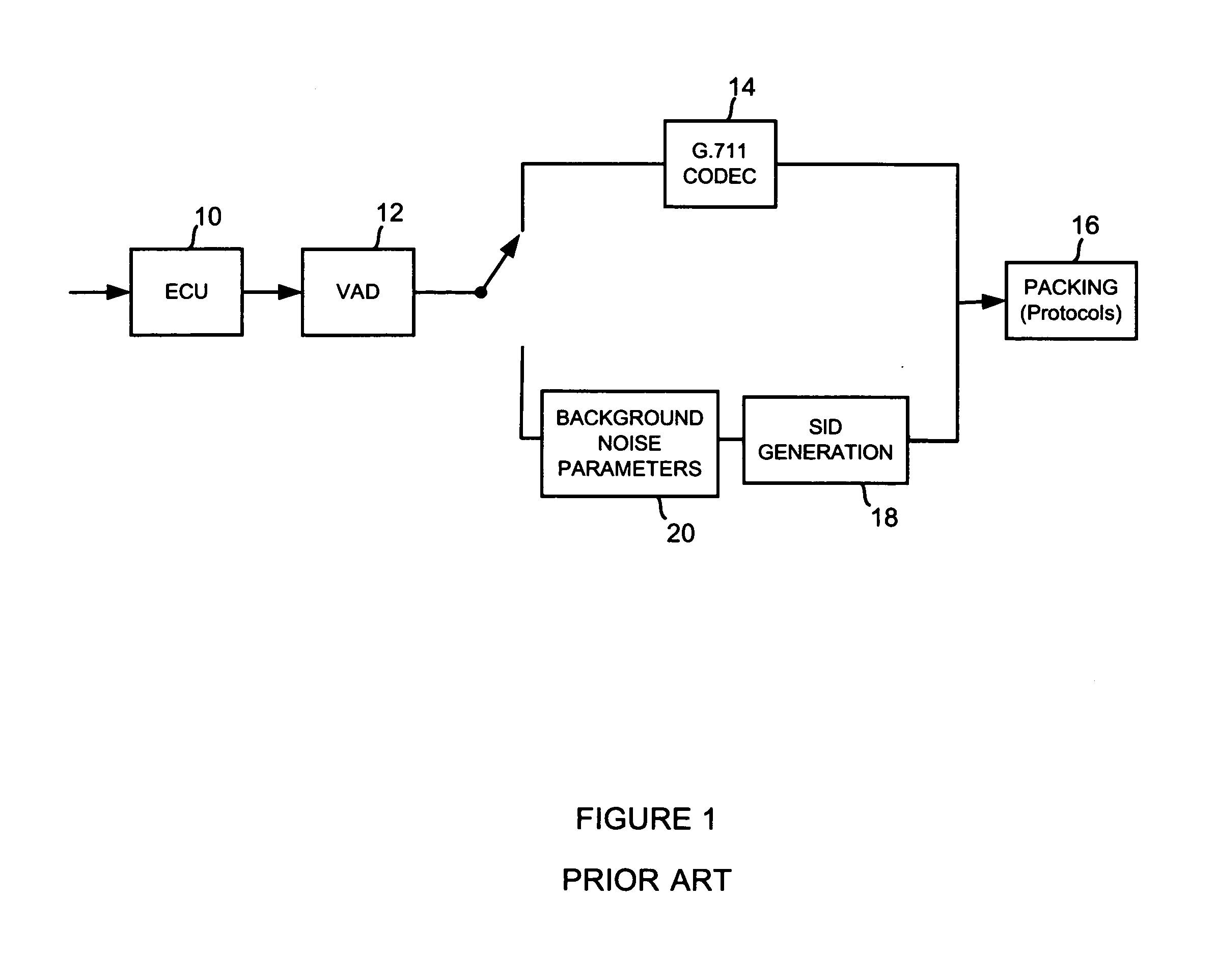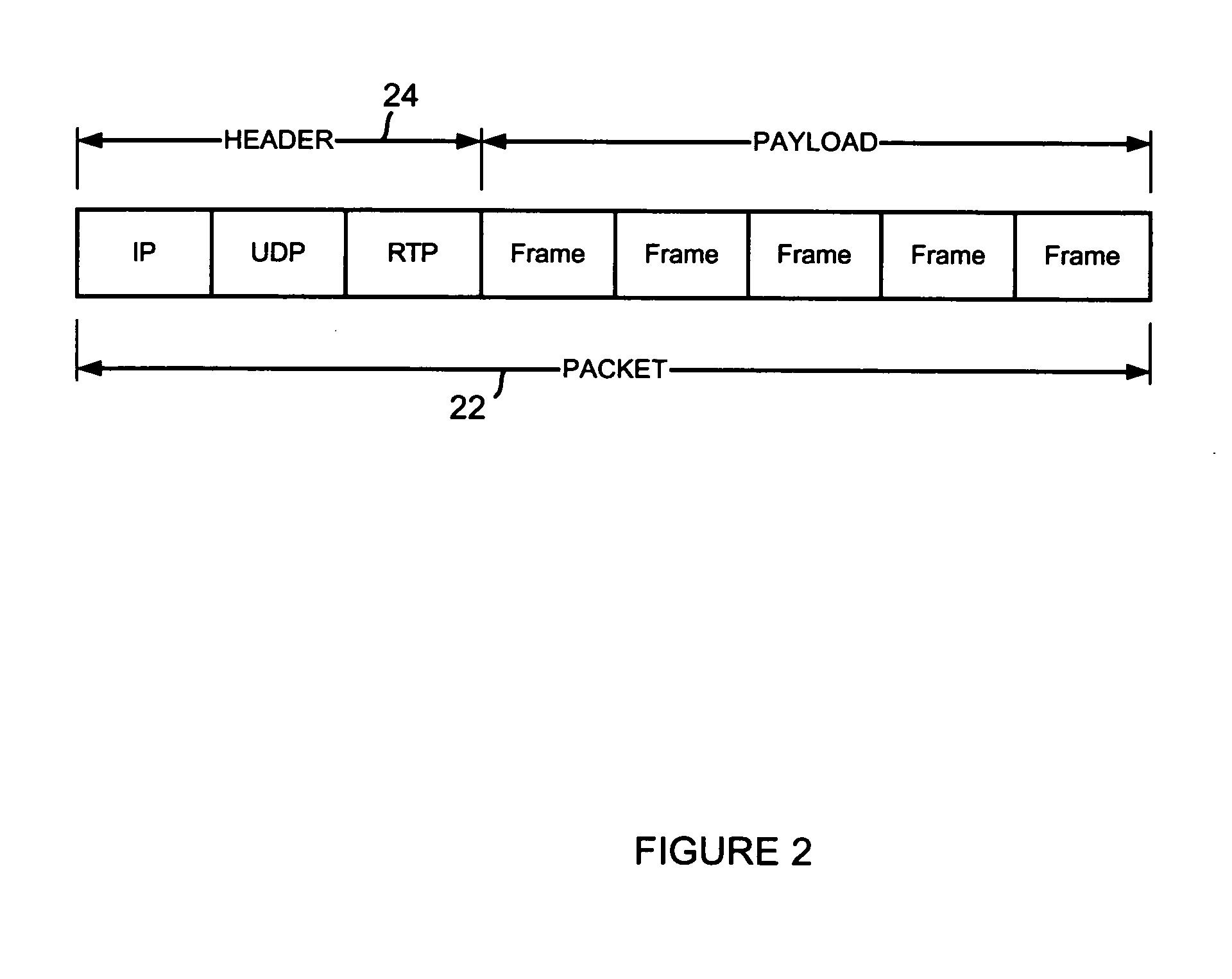SID frame update using SID prediction error
a technology of sid frame and prediction error, applied in the field of sid frame update using sid prediction error, multimedia communication system, can solve the problems of more complex generation of sid, noise generation, and unpleasant conversation
- Summary
- Abstract
- Description
- Claims
- Application Information
AI Technical Summary
Benefits of technology
Problems solved by technology
Method used
Image
Examples
Embodiment Construction
[0017] The preferred embodiment includes a technique and system to update a SID (Silence Insertion Descriptor) frame algorithm in a packet-based multimedia communication system. The decision to send a SID packet is based on the prediction residual of the spectral content of the background noise. This technique uses calculations of linear error predictions of the codec between consecutive input frames that are compared to a threshold. One implementation of the present invention includes the ITU G.711 Appendix II standard, which specifies that a DTX (Discontinuous Transmission) algorithm (also called the “SID update algorithm”) “determines the frequency of SID frame transmission” and that more complex algorithms can also transmit a SID using a SID update algorithm that determines “when a significant change in background noise character is detected” during a period of inactive speech.
[0018] In a digital communication system, such as the G.711 Appendix II standard, a CNG (Comfort Noise...
PUM
 Login to View More
Login to View More Abstract
Description
Claims
Application Information
 Login to View More
Login to View More - R&D
- Intellectual Property
- Life Sciences
- Materials
- Tech Scout
- Unparalleled Data Quality
- Higher Quality Content
- 60% Fewer Hallucinations
Browse by: Latest US Patents, China's latest patents, Technical Efficacy Thesaurus, Application Domain, Technology Topic, Popular Technical Reports.
© 2025 PatSnap. All rights reserved.Legal|Privacy policy|Modern Slavery Act Transparency Statement|Sitemap|About US| Contact US: help@patsnap.com



